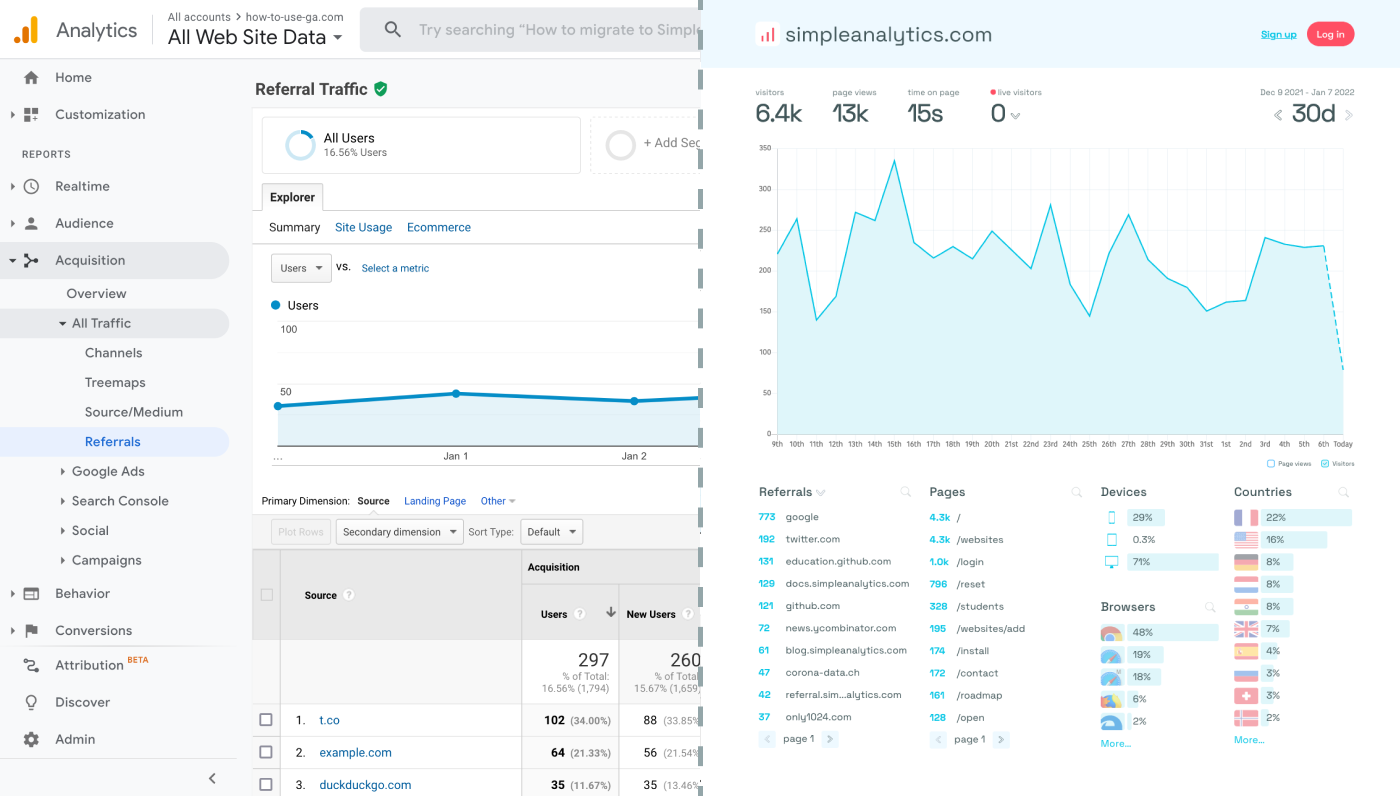Integrating Google Analytics with your React application can help you optimize your app and understand user behavior. Here is how to do it, step by step.
Let's dive in!
Before we dig in I want to show you something. I promise it's worth it...
Google Analytics is great, but also complex and a bit clunky. If you just want a straightforward dashboard with the insights you need, GA is not a great place to start. Additionally, Google doesn't care about privacy and GA requires an annoying cookie banner.
That's why I built Simple Analytics, a privacy-friendly and simple analytics tool - no personal data, no cookies, just the insights you need in a straightforward dashboard.
Here is how it looks vs GA. Feel free to check our live analytics to get an idea for your project. (It is free btw)
All right, enough about us. Now let's get into answering your question!

Integrating Google Analytics
Set up Google Analytics
- Log into your GA profile (or create one, if you haven't already)
- Create a GA property for your app.
- Inspect the property and note down your Measurement ID. You will need it later.
Install Google Analytics in Your React App
Install GA Library: Use npm or yarn to install a GA library that supports GA4. One popular option is
react-ga4. Run the command:npm install react-ga4or
yarn add react-ga4Initialize GA: In your React application, typically in the main entry file like
App.js, import and initialize the GA library with your Measurement ID:import ReactGA from 'react-ga4'; ReactGA.initialize('Your-Measurement-ID');
Track Pageviews
To track pageviews, you can use the useEffect hook in your React components. For example, in your App.js, add:
useEffect(() => {
ReactGA.send({ hitType: "pageview", page: window.location.pathname });
}, []);
Track events:
You can use the 'useEffect' hook to track specific user actions like as well. For instance, you can track button clicks by adding the following code:
j
const handleButtonClick = () => {
ReactGA.event({
category: 'User',
action: 'Clicked a button'
});
};
Test Your Integration
To ensure everything is set up correctly:
- Use Real-Time Reports: Check real-time reports in your Google Analytics dashboard to see if pageviews and events are being recorded.
- Debugging: Utilize the 'DebugView' in GA4 for troubleshooting and verifying event tracking.
(Optional) Create New Properties
To track multiple apps, create more GA properties and use the corresponding Measurement IDs. This prevents GA from conflating the data.
Final Thoughts
Adding Google Analytics to your app can give you great insights. However, ask yourself: is Google Analytics the right tool for you?
GA is an overpowered solution for straightforward analytics. If you're looking for a simple and intuitive dashboard with the insights you need, there are better alternatives. Yes, I’m talking about my own product (Simple Analytics), but there are others out there as well.
I hated using Google Analytics for my projects. It's clunky, there are hundreds of dashboards and it doesn't look appealing. Also Google doesn't care about privacy or ethics. That's why I decided to build my own and more intuitive web analytics tool.
If this resonates with you, feel free to give Simple Analytics a spin. You just need to add the script to your app and off you go. This takes about one minute- and there is a free version as well!
Enjoy!
